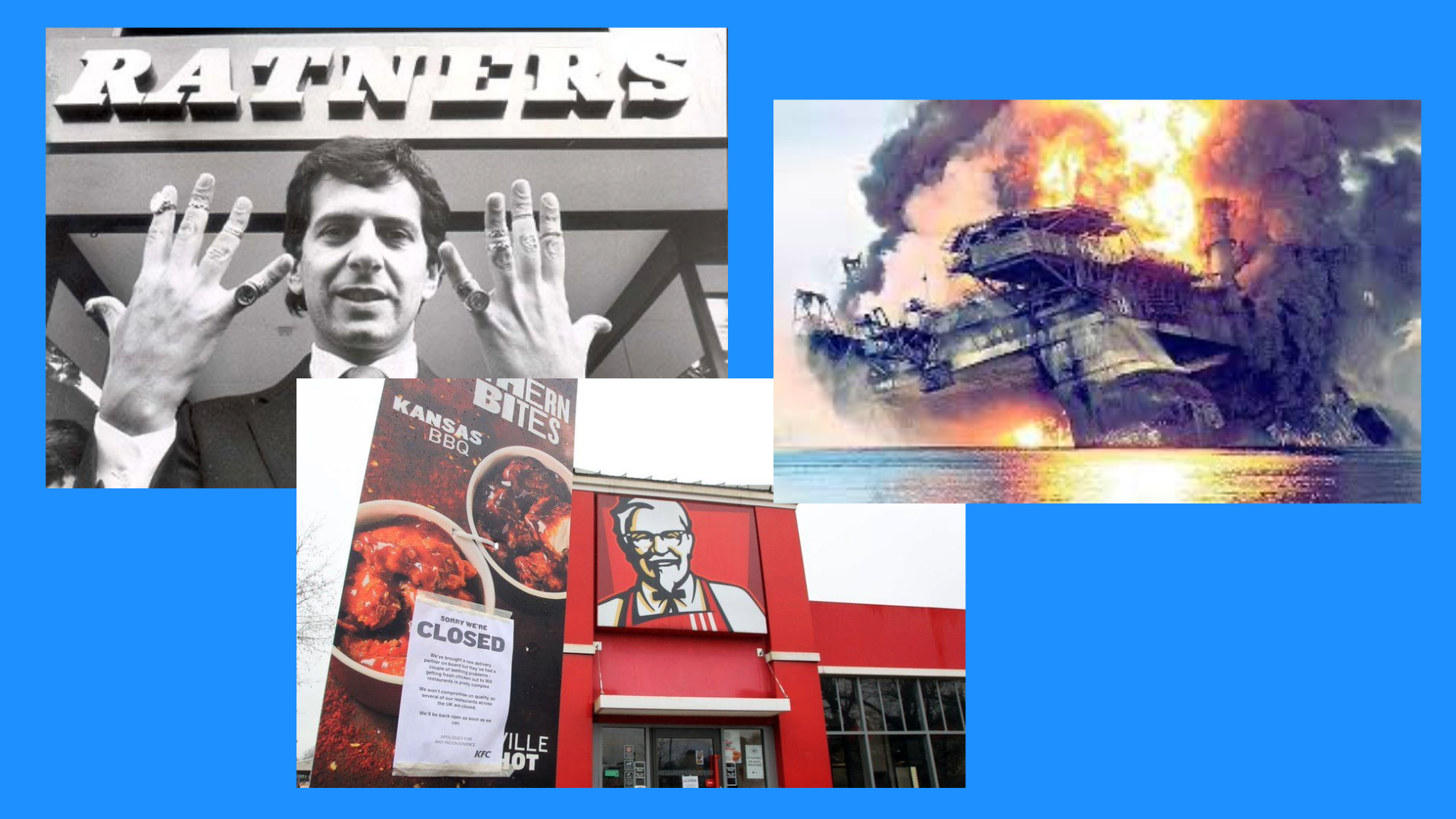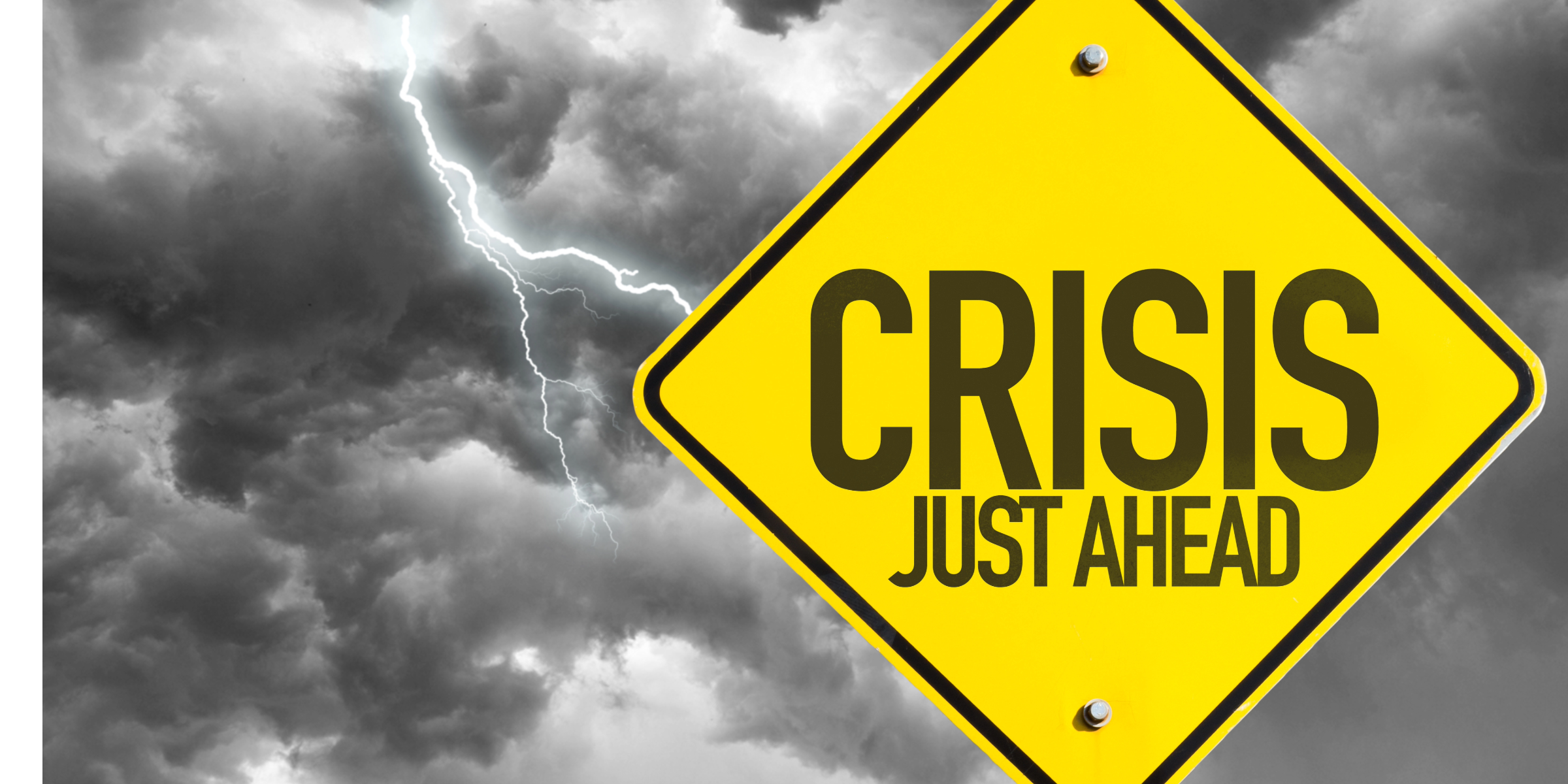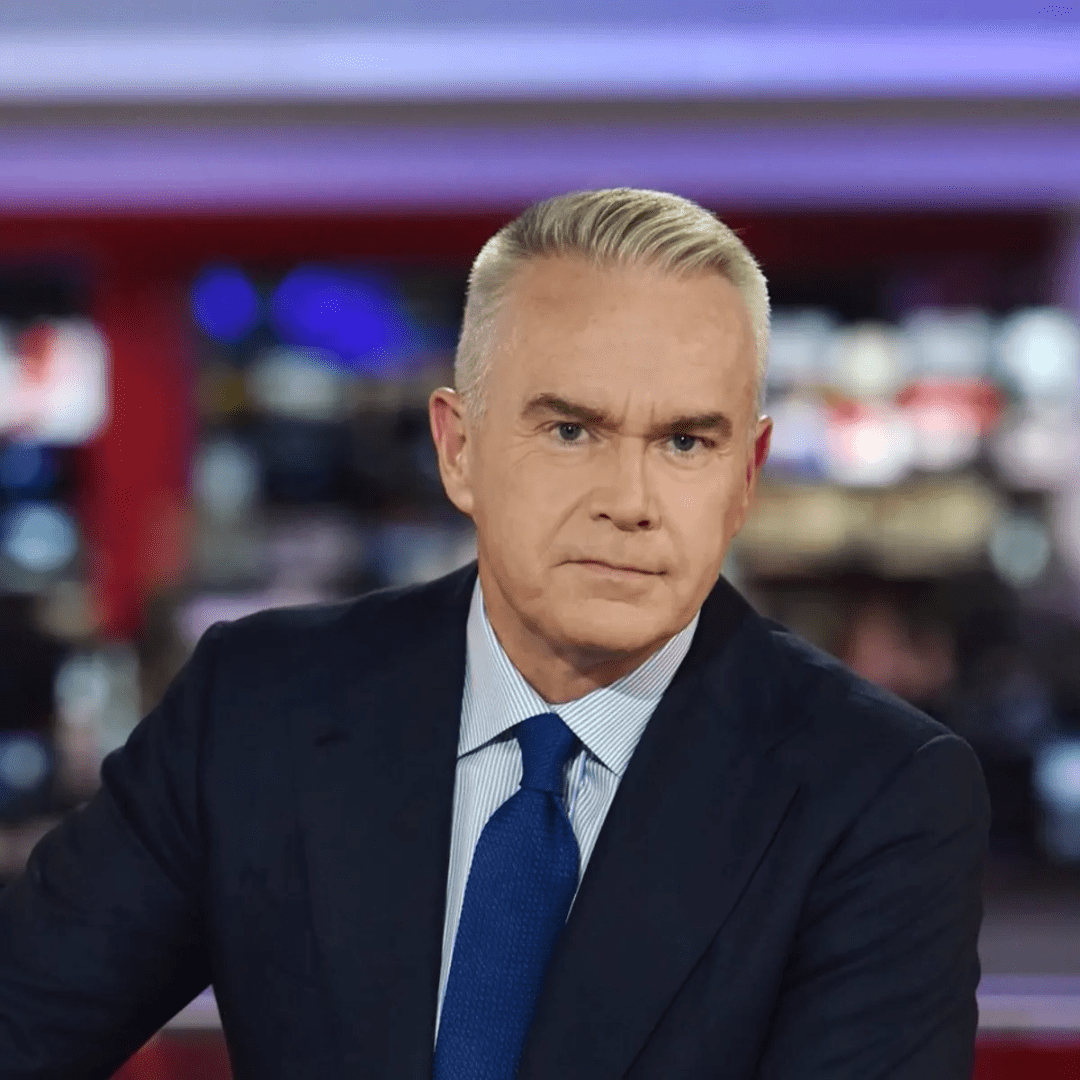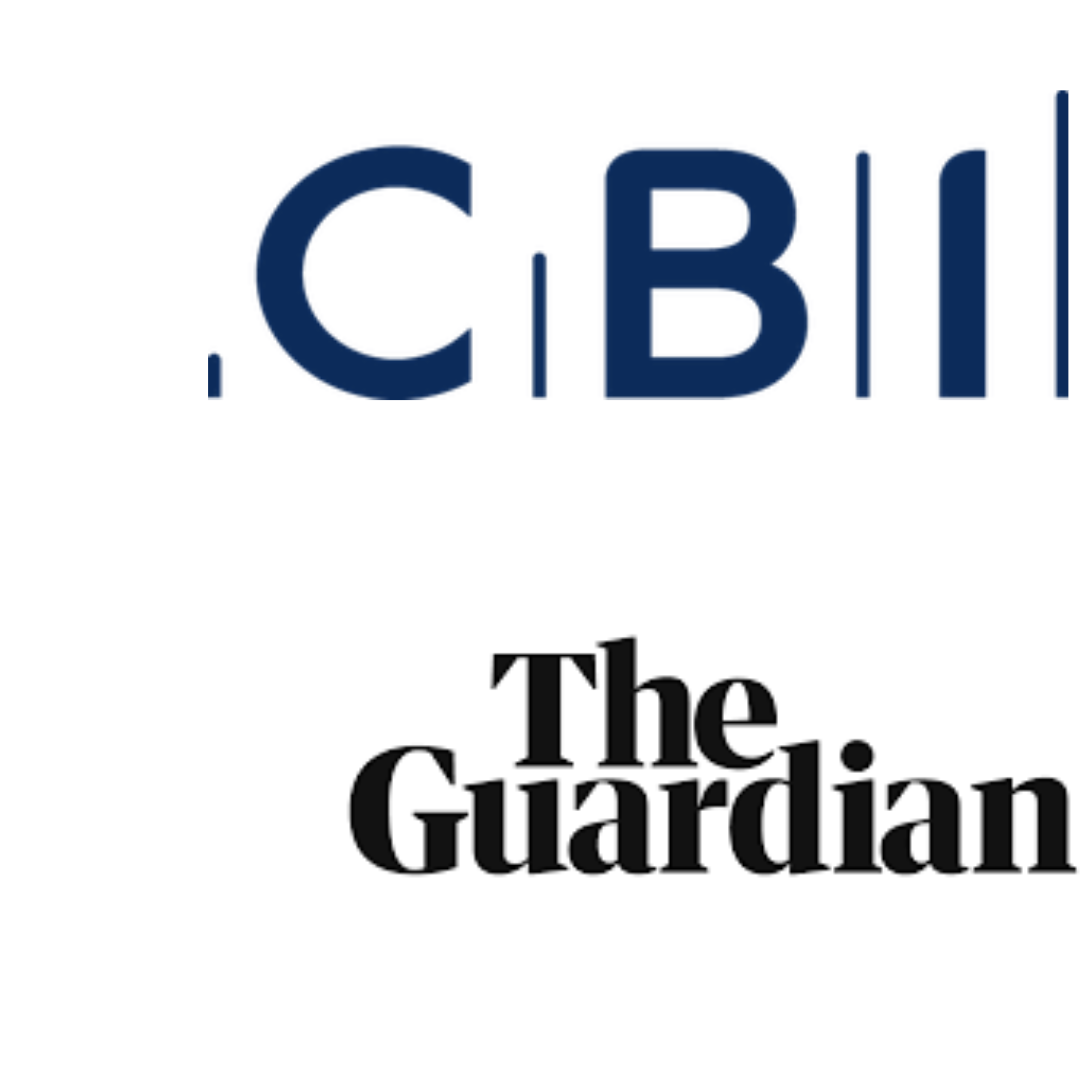Any organisation, business or brand at some point has to deal with a crisis – and it occurs when there is a severe risk or threat to the reputation of a business, organisation and brand. A crisis can affect a Government or a nation – even a family can be in crisis. Prince Harry’s book ‘Spare’ In 2023 caused a media furore which is still unfolding.
The role of PR crisis communications is therefore highly important in coming up with an appropriate response as fast as possible and preventing further damage.
A PR crisis has a natural lifespan but, the effects can be felt for years because the internet is a permanent record and like an elephant doesn’t forget!
A cursory search today of PR crisis and KFC’s Chicken shortage of 2018 flashes up along with BP Deepwater horizon oil spill in the Gulf of Mexico from 2010. Jeweller Gerald Ratner made a speech in April 1991, which caused used him to lose all that he worked for over a decade in just 10 seconds that crisis is still being reported more than 30 years later…

Lifespan of a PR crisis
The lifespan of a PR crisis encompasses four distinct phases, and it is critical to work your way methodically through them and not expect a swift and easy resolution. We would argue you’d be very lucky if the aftereffects are short term, lasting only until the next big story drops. More concerningly in some cases the damage is irreparable.
A PR crisis management plan is critical and at its most basic it is a document which covers off issues like the objective of the plan, who the key stakeholders are, a hierarchy as the crisis escalates and who will be speaking to the media/social media channels.
Step 1: Acknowledge
Your strategy for PR crisis management must be to react quickly – that doesn’t mean knee jerk. While speed is critical your response to a crisis needs to be measured, thoughtful and targeted. Getting emotional and defensive isn’t going to help and will make you look unprofessional. Being truthful is also critical – don’t lie, don’t try and cover up a bad news story. That said not every negative story is a PR emergency it can just be someone’s opinion or a slow news day.
A good barometer is whether events and the reporting of the crisis are escalating beyond the control of your communications team and are now important enough to bring to the attention of senior management. They may also be dramatically affecting your brand, business or organisation.
Our recommendation is to acknowledge the PR crisis – no excuses and immediately send the media a holding statement and if necessary, apologise. Never simply say ‘no comment’. Even if the truth is that you are still assessing the situation – those words will imply to the media and your customers/stakeholders that you’re not being transparent.
Be truthful, tell people what you’re going to do about the problem and then action it. This is critical.
Be prepared to be ‘ door stepped’ by the media including broadcasters either at your place of work or potentially your home. Take control – don’t shield your face, try and run away /drive away from the media it just creates more drama. Stop – be calm and communicate your key messages with a clear timeline for further updates including whether you’re making a spokesperson available for interview.
There are some ‘must have attributes ‘for a perfect spokesperson in a crisis.
They need to be willing and available and better if the spokesperson will take questions from the media otherwise an alternative option is to read a prepared statement to camera.
Step 2: Repair
Having a spokesperson who is media trained will make navigating crisis management in Public Relations easier. There is always a balance between ensuring that your key messages are communicated whilst giving the journalist what they’re looking for. In a crisis – that’s a thoughtful, truthful, reassuring response. There will inevitably be difficult questions and to respond to them effectively our recommendation is to use the ABC technique. That’s acknowledging the question use a bridging sentence which allows you to change tack and steer the interview to what you want to communicate.
Availability of spokespeople to speak to the media is a key consideration and if possible have some ‘back up’ as it may be too onerous for one or two key people to field all interview requests across multiple platforms and potentially time zones.
It isn’t just the media, customers or shareholders who need to be briefed and updated. Stakeholders too need to be kept abreast of all the relevant details and will require reassurance that the ‘situation’ is under control and that the communications and management team can handle it.
Ensure that internal communications is also implemented and effective and that messaging across the company or organisation is consistent. In a PR emergency there is strength in unity and in dealing with the PR crisis in a speedy and professional way to prove to all that the organisation is investing in the future. Employees, managers, suppliers, the local community and interested observers all need to be confident that business will continue as usual.
As the containment phase continues it will follow a mappable timeline. The risk emerges, the crisis hits, the crisis peaks, then the PR crisis management team handles the transition out of the crisis. How catastrophic or impactful the crisis is or isn’t really depends on the length of this timeline. It goes without saying that limiting the timeline of the crisis is the aim of your PR crisis management plan.
Continuously updating the media and stake holders will help mitigate the crisis – an old fashioned press release won’t be enough you need to speak to them via the communication channels they’re familiar with; X, Instagram, Facebook not just via media that your stakeholders communicate with you over, but also the platforms they reach each other through. Remaining silent only allows the crisis to escalate and inaccurate information to spread as the media and stakeholders, particularly those directly affected, attempt to discover what happened.
Media monitoring is also a must have– it allows to you identify what journalists, broadcasters and social media users are saying about your brand. With this insight you can react appropriately and promptly, which is crucial in PR crisis containment.
Step 3: Containing the crisis
Once the furore subsides – probably after a couple of months it’s a chance to re-engage with the media, stakeholders and customers. Have the courage of your convictions – offer your spokespeople up to consumer journalists and broadcasters and explain what your organisation has done to address the crisis and how you’ve moved on. Invite them to film or photograph where appropriate.
When it comes to dealing with a PR crisis, and building back trust the most important factor is showing compassion and empathy. These should be the building blocks to repairing a damaged brand image. Companies who understand that consumers, customers, stakeholder or employees — are people too will succeed most in repairing their reputation.
Companies can bounce back with the right strategies. Safety has to come first and be open about what you’re doing to build back trust with your customers is a winning formula for earning back public trust after a disaster.
Revise your actions after each PR crisis – it sounds obvious but you have to re-evaluate and be honest with yourself.
Learning from real-life situations plays a huge part in PR (and crisis) management. Make sure you test and assess the efficiency of your PR strategies for crisis management and build them up with new insights as you’ve gained them.
Step 4: Build
Ideally of course you would stop the crisis before it happens: The best way to handle a crisis is not to cause one. But that’s not realistic- more beneficial is to revise your PR crisis comms plans following your own incident.
Those who have gone through a major crisis say learning from real-life situations plays a huge part in PR (and crisis) management. Assess the efficiency of your PR strategy for crisis management and build them up with new insights as you gain them.
Learn from others PR crisis you see in your industry. Potentially, you may face similar issues as your competitors, and the audiences’ and media’s reactions can guide you in improving your messaging and approach.
It takes time but build your reputation back up so you have the strength and resilience to withstand any negative publicity.
You’ll have to work hard at it – and for some brands this may be through improving their corporate and social responsibility or customer service to build back up customer loyalty.
To cement trust, though is always doing what you say you will! However you hone your reputation, actions speak louder than words.
Shout! Communications are experts in crisis management
We’ve been delivering media training and PR crisis communications services to C-Suite delegates, brands, charities and business owners for 20 years. This includes pre-crisis set up and live support during a crisis
Our team of expert trainers are all former broadcast journalists at national level including the BBC Business Unit, ITV, GMB and Sky News. We’re specialists in media relations as well as training, which means we live and breathe broadcast PR, and understand how the broadcast landscape works and can ensure your spokesperson is competent on air in a crisis.
Crisis media training allows you to take control during broadcast media interviews, feel comfortable and confident to appear on mic and camera and to communicate key messages.
For more information contact hello@shoutcommunications.co.uk or call 020 7240 7373.







